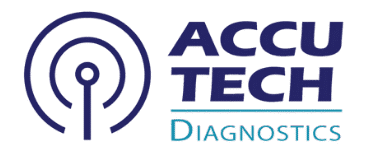Guiding Treatment
"Guiding Treatment" in a diagnostic context refers to the process by which laboratory test results and other diagnostic information directly influence and optimize clinical decisions regarding a patient's medical therapy or management plan. It's about using objective data to ensure the most effective, safe, and personalized treatment is chosen and adjusted for each individual.
How Diagnostic Information Guides Treatment
The diagnostic laboratory moves beyond just identifying a disease; it provides crucial insights that shape the entire treatment journey.
Confirming Diagnosis & Etiology
- Example: A patient presents with pneumonia. A sputum culture identifies Streptococcus pneumoniae as the causative agent.
- Guidance: This confirms the bacterial nature of the infection, ruling out viral causes and guiding the choice of antibiotics effective against this specific bacterium.
Antimicrobial Susceptibility Testing (AST)
- Example: Following the sputum culture, the lab performs AST, showing Streptococcus pneumoniae is sensitive to penicillin but resistant to erythromycin.
- Guidance: This directly guides the physician to prescribe penicillin (or a related beta-lactam) and avoid erythromycin, ensuring effective treatment and preventing the use of ineffective drugs. This is crucial for combating antimicrobial resistance.
Identifying Specific Disease Subtypes/Biomarkers
- Example: A patient is diagnosed with lung cancer. Molecular testing (e.g., Next-Generation Sequencing) on the tumor biopsy reveals an EGFR
- Guidance: This mutation indicates that the patient is likely to respond well to EGFR tyrosine kinase inhibitors (TKIs), a type of targeted therapy, rather than traditional chemotherapy alone. This is a prime example of precision oncology.
Identifying Risk for Adverse Drug Reactions (Pharmacogenomics)
- Example: Before prescribing abacavir (an HIV drug), a pharmacogenomic test (HLA-B*5701) is performed.
- Guidance: If the patient tests positive for the HLA-B*5701 allele, abacavir is contraindicated due to a high risk of a severe, potentially fatal hypersensitivity reaction. An alternative drug is chosen.
Assessing Organ Function for Drug Dosing
- Example: A patient needs an antibiotic that is primarily cleared by the kidneys. Serum creatinine and eGFR are measured.
- Guidance: If kidney function is impaired (low eGFR, high creatinine), the dose of the antibiotic must be reduced to prevent drug accumulation and toxicity. This applies to many medications (e.g., chemotherapy, cardiovascular drugs).
Therapeutic Drug Monitoring (TDM)
- Example: A transplant patient is on tacrolimus, an immunosuppressant. Regular blood tests measure tacrolimus levels.
- Guidance: If the level is too low, the dose is increased to prevent organ rejection. If it’s too high, the dose is decreased to prevent kidney toxicity or other severe side effects.
Monitoring Treatment Response
- Example: A patient with Multiple Myeloma is undergoing chemotherapy. Serum M-protein and Free Light Chain levels are monitored monthly.
- Guidance: A significant decrease in these markers indicates a good response to therapy, while a rise might signal progression or recurrence, prompting a change in treatment strategy.
Guiding Prophylactic Measures
- Example: A transplant patient’s CMV viral load (PCR) is monitored.
- Guidance: If CMV DNA levels start to rise, pre-emptive antiviral therapy can be initiated to prevent full-blown CMV disease, which could otherwise lead to severe illness or graft rejection.
Assessing Nutritional Support
- Example: A critically ill patient’s albumin and prealbumin levels are monitored.
- Guidance: Low levels might indicate inadequate protein intake or severe inflammation, prompting adjustments in nutritional support (e.g., increasing protein, initiating parenteral nutrition).
The Indispensable Role of the Diagnostic Laboratory
The diagnostic laboratory is the engine that drives evidence-based treatment decisions. It provides:
Objective Data
Quantitative and qualitative results that remove guesswork.
Timeliness
Rapid turnaround times for critical tests.
Precision and Accuracy
Reliable results that clinicians can trust.
Specialized Expertise
The ability to perform complex tests (e.g., molecular diagnostics, TDM) that are beyond the scope of routine clinical assessment.
In essence, “guiding treatment” is one of the most impactful contributions of diagnostic medicine, transforming raw data into actionable insights that lead to better patient outcomes.

